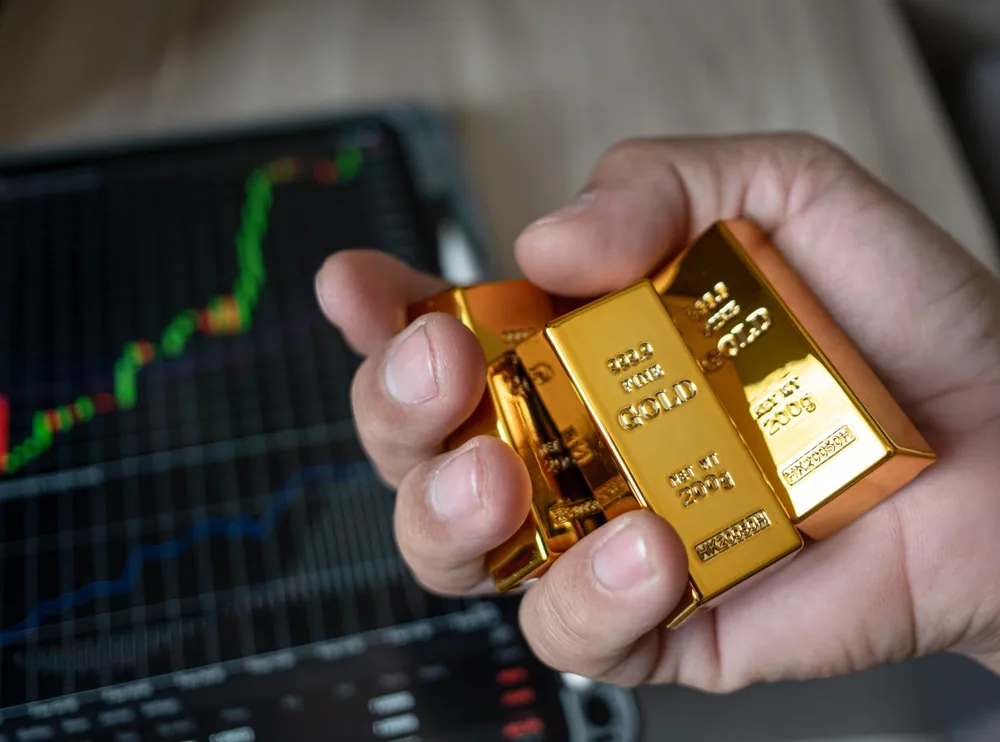Gold surged to new records on Tuesday, briefly touching $3,702.84 per ounce before settling around $3,685 as investors anticipate Federal Reserve rate cuts and respond to a weakening U.S. dollar. The precious metal continues its remarkable 2024 performance, having climbed approximately 41% since January.
The dollar fell to its lowest level since July, providing additional momentum to gold’s upward trajectory. U.S. gold futures similarly peaked at $3,739.90 before moderating slightly. Marke
...
Gold surged to new records on Tuesday, briefly touching $3,702.84 per ounce before settling around $3,685 as investors anticipate Federal Reserve rate cuts and respond to a weakening U.S. dollar. The precious metal continues its remarkable 2024 performance, having climbed approximately 41% since January.
The dollar fell to its lowest level since July, providing additional momentum to gold’s upward trajectory. U.S. gold futures similarly peaked at $3,739.90 before moderating slightly. Market participants have largely factored in a rate reduction at this week’s Federal Reserve meeting, a development that typically enhances gold’s appeal by lowering the opportunity cost of holding the non-yielding asset.
Gold’s ascent has been nothing short of extraordinary this year, outperforming major stock indices including the S&P 500. The current price has even surpassed gold’s inflation-adjusted peak from 1980, marking a truly historic run for the precious metal.
Analysts point to multiple converging factors driving the rally. Strong purchasing activity from central banks worldwide has provided consistent support for prices throughout the year. Simultaneously, heightened geopolitical uncertainties have strengthened gold’s traditional role as a safe-haven asset during turbulent times.
Perhaps most significantly, there are indications of an ongoing shift by some investors away from dollar-denominated assets, with capital flowing into precious metals as an alternative store of value.
The strength and persistence of investment demand has prompted major financial institutions to revise their forecasts upward. UBS recently adjusted its year-end price target for gold to $3,800, reflecting confidence in continued positive momentum.
Goldman Sachs offered an even more bullish outlook earlier this month, suggesting prices could approach $5,000 per ounce if just 1% of privately held U.S. Treasuries were redirected into gold. Such projections highlight the potential impact of even modest portfolio reallocations toward precious metals in the current economic climate.
The Federal Reserve’s upcoming policy decisions remain central to gold’s near-term outlook. Traders aren’t merely anticipating a September rate cut but are positioning for multiple reductions before year-end. Recent U.S. economic data has pointed to cooling in the labor market without alarming inflation readings, reinforcing expectations for monetary easing.
Gold historically performs well during cycles of interest rate reductions, as lower rates diminish the relative appeal of yield-generating investments while enhancing the case for holding precious metals as a hedge against economic uncertainty.
The market will be closely watching the scale and pace of Fed rate cuts in coming months. A more aggressive easing cycle could potentially accelerate gold’s rise, while a more measured approach might result in more gradual price appreciation.
What makes the current rally particularly noteworthy is the combination of both structural and cyclical factors supporting higher prices. Structural elements include the ongoing diversification of reserves by central banks globally, particularly in emerging economies seeking to reduce dollar dependency. Meanwhile, cyclical factors like the anticipated shift toward looser monetary policy provide additional tailwinds.
Market observers note that gold’s performance during this rate-cutting cycle could differ from historical patterns due to the unique economic backdrop, which includes elevated government debt levels and persistent geopolitical tensions.
Whether the precious metal can sustain its momentum into 2025 will likely depend on several factors: the depth of Fed rate cuts, inflation trajectories, dollar strength, and investors’ continued willingness to allocate capital toward gold as both an inflation hedge and portfolio diversifier.


